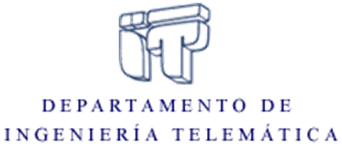Room 4.1.E06 - Torres Quevedo Building, University Carlos III of Madrid, Avda. Universidad, 30, 28911 Leganés – Madrid
 In the era when Facebook and Twitter dominate the market for social media, Google has introduced Google+ (G+) and reported a significant growth in its size while others called it a ghost town. This begs the question that "whether G+ can really attract a significant number of connected and active users despite the dominance of Facebook and Twitter?".
In the era when Facebook and Twitter dominate the market for social media, Google has introduced Google+ (G+) and reported a significant growth in its size while others called it a ghost town. This begs the question that "whether G+ can really attract a significant number of connected and active users despite the dominance of Facebook and Twitter?".
This paper tackles the above question by presenting a detailed characterization of G+ based on large scale measurements. We identify the main components of G+ structure, characterize the key features of their users and their evolution over time. We then conduct detailed analysis on the evolution of connectivity and activity among users in the largest connected component (LCC) of G+ structure, and compare their characteristics with other major OSNs. We show that despite the dramatic growth in the size of G+, the relative size of LCC has been decreasing and its connectivity has become less clustered. While the aggregate user activity has gradually increased, only a very small fraction of users exhibit any type of activity. To our knowledge, our study offers the most comprehensive characterization of G+ based on the largest collected data sets.
About Roberto González:
Roberto Gonzalez Sanchez was born in Madrid, in 1984. He obtained his MSc in Telematics engineering and an MSc in Telecommunications Engineering from University Carlos III of Madrid (Spain) in 2011 and 2009, respectively. He is a member of the Telematic Engineering Department and of the NETCOM research group since 2010, where currently he is a Teaching Assistant and a PhD student. He has been teaching during the last 3 years in different degrees (Telecommunication Systems, Audiovisual Systems, etc.).
This event will be conducted in English

